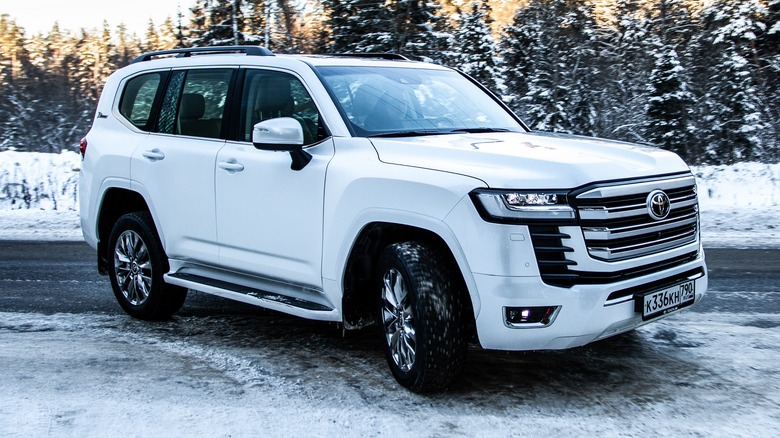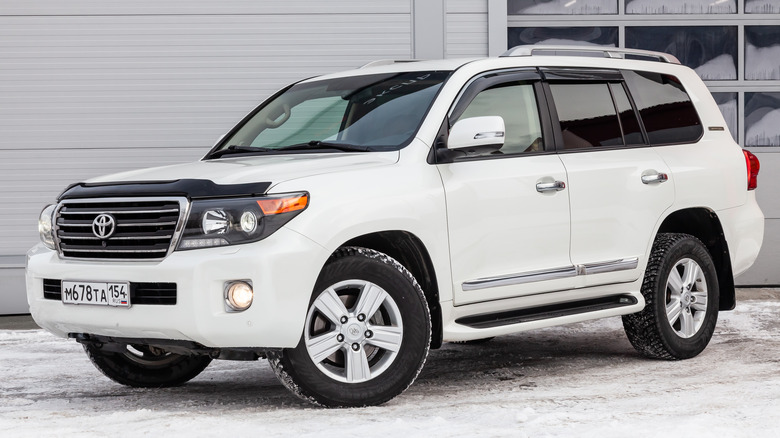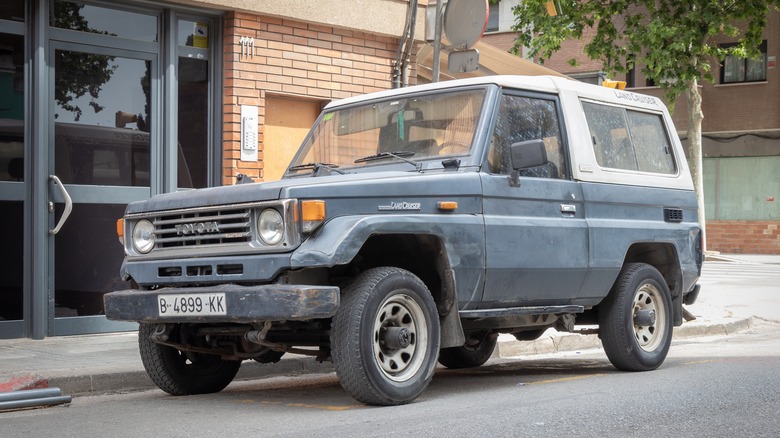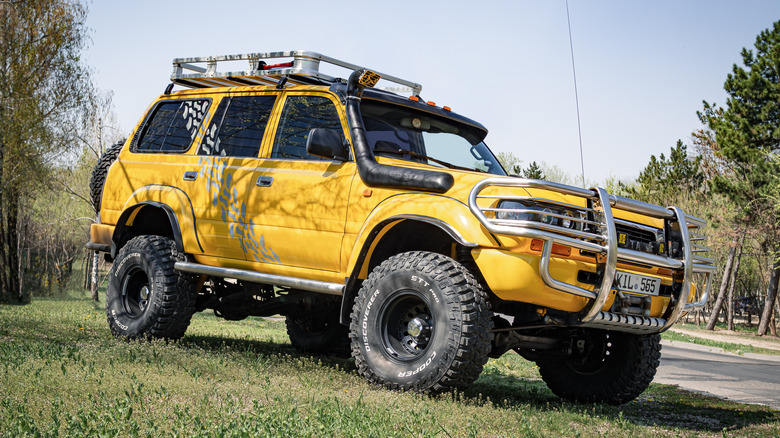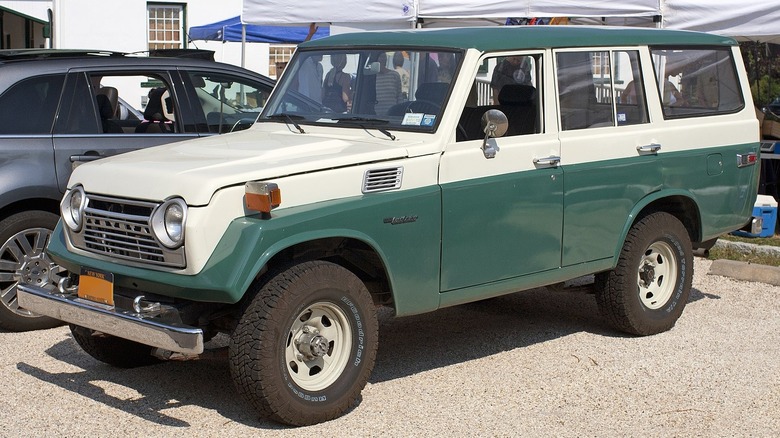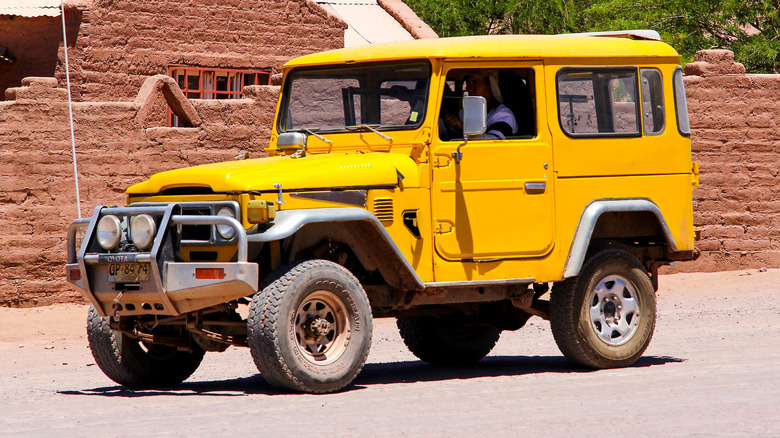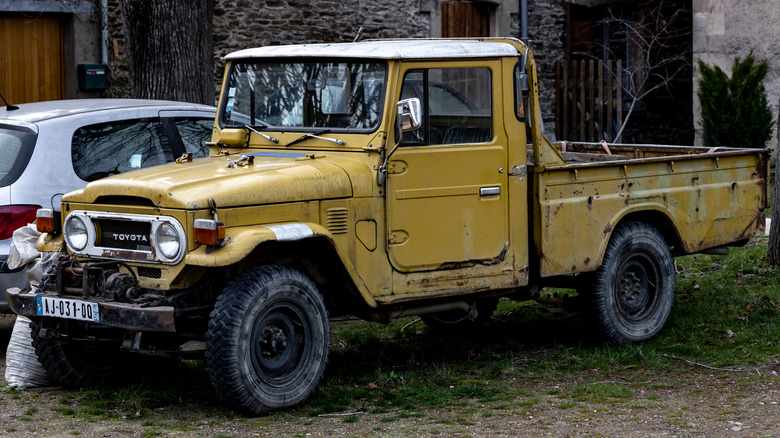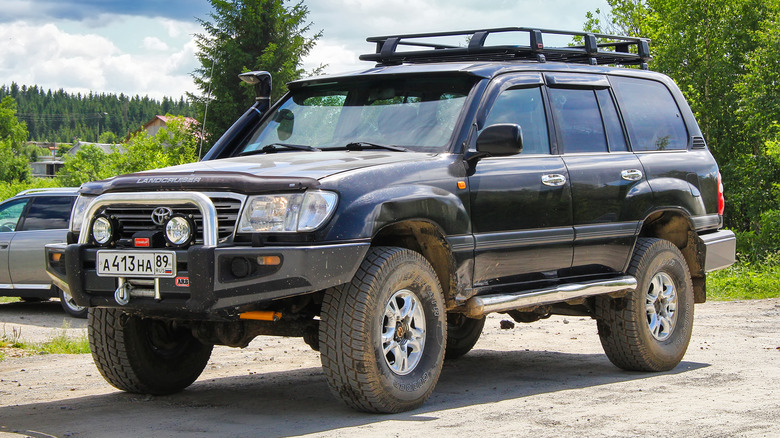Every Toyota Land Cruiser Generation Ranked From Best To Worst
The Land Cruiser is one of Toyota's longest-running and beloved models and has been in production since 1955 (even earlier if you count the Land Cruiser's direct predecessor, the Toyota Jeep BJ). Over 10 million Land Cruisers had been sold worldwide before Toyota ceased production in 2021, and there are several different series of models and variations that have hit the streets in the past seven decades.
Some generations of the Land Cruiser have been better than others, and not every generation was better than the last. The line has gone through many changes over the years, especially as it evolved from an off-road utility vehicle geared for more military applications to a more comfortable, luxurious, consumer and passenger-friendly SUV. The model's recent hiatus proved to be short-lived, as a whole new generation of Land Cruisers will begin production starting next year. Only time will tell how the 2025 Land Cruiser compares to its predecessors, but here are all the existing Toyota Land Cruiser generations, ranked from best to worst.
J200 (2008 - 2021)
This may seem like a controversial pick for the best generation of Toyota Land Cruisers, but that's because it encompasses so many versions of the SUV. Several J200 models — including 2009, 2012, and 2019 Land Cruisers — that come from this generation are arguably the best the line has ever produced, which is why it ranks high. However, a few of the biggest duds in the Land Cruiser's varied history also come from this era, like the 2008 and 2013 models. In 2008, the Land Cruiser had issues with its key fob, and its air conditioning system tended to rust quickly and cause the A/C to break down suddenly. The headlights on the 2013 Land Cruiser also could fail suddenly, a particularly serious and dangerous problem.
But the Land Cruiser really shined for most of this generation. The J200 series shared the Lexus LX 570's platform and design and received two facelifts during this period. It was given stronger suspension, safety sensors, better protection from rollovers, and more airbags. It implemented a lot of advancements the automotive industry as a whole had made in the 21st century. Even the inferior 2013 model had included all previously-optional safety and luxury features as standard. This generation also saw several driver-assist tools included, and, despite being a luxury SUV, the J200 was still modestly priced. Models from this era had a Kelley Blue Book consumer rating of 4.6 out of 5, and an Edmunds Consumer Rating of 4.7 out of 5 for most of its run.
J60 & J70 (1980 - 1989)
The 1980s were the decade of the J60 and J70 series, which more-or-less completed the Land Cruiser's transition from off-road truck to one of the best SUVs, which was starting its ascent in the automotive market. As such, comfort and luxury were given more of a priority than previous generations, with the J60 being the first series to include air conditioning and rear heating.
While the comfy and climate-controlled interior felt like a big change for the Land Cruiser, it still had oomph both on and off the road. This generation saw the introduction of a direct-injection 12H-T turbodiesel engine, capable of 134 horsepower and 314 nm of torque at 3500 rpm, as well as upgraded gas engines. A stock J60 was even capable of competing over demanding, rugged terrain in the Botswana Kalahari Toyota 1000 Desert Race. While newer generations populate modern roads, for many people the J60 and J70 models of the 1980s are the quintessential form of the Land Cruiser.
J80 (1990 - 1997)
Starting in the 1990s, Toyota began producing the J80 series. One obvious change from the previous generation was the exterior's shape from its more traditional boxier configuration to the more rounder edges that had begun to dominate the industry after the 1980s.
But these softer contours didn't mean the Land Cruiser had lost its durability. In fact, quite the opposite was true, and the vehicle proved itself more capable than ever at handling rough terrain. For buyers in Europe and North America, all vehicles from this generation included full-time four-wheel drive. The J80 also replaced leaf springs with two coil-sprung solid axles. Anti-lock brakes were also introduced to the Land Cruiser during this time.
While the gas engines weren't the Land Cruiser's best, the J80 diesel engines were lauded for their fuel efficiency and power. The luxury-oriented interior also continued to evolve for the Land Cruiser during this generation. Besides A/C and heating for the entire cabin, the J80 sported more room and leather seats and was especially quiet compared to older models. A small refrigerator was even available for the J80 center console.
J50 & J55 (1967 - 1979)
The J50 and J55 series that Toyota produced from 1967 to 1979 introduced the traditional "station wagon" style the Land Cruiser is well known for. In terms of design, you could argue the biggest overall change was between this generation and the previous one. While that design, both inside and out, evolved and was improved upon with subsequent generations, these Land Cruisers were still solid, beloved vehicles. While not quite the family-friendly SUV that the J60 would more closely resemble, the J55 had more interior space and felt more like a passenger car than its predecessors, despite a relatively large chassis. The J55 even earned the nickname "the Moose" for its roomy cabin.
This era of the Land Cruiser, like others, included durable and dependable models. However, like most vehicles of the era, especially larger ones, they weren't the most fuel efficient. At the time, it might've been hard to imagine Toyota ever improving on this version of the Land Cruiser, but for the most part, the line has only improved with age.
J40 (1960 - 1966)
While the Land Cruiser has spanned multiple generations and interactions, you could really divide its lifespan into two distinct eras: before 1967 and after 1967. The two generations of Land Cruiser produced before 1967 were much more oriented toward off-road use, while the ones after 1967 put passengers and comfort first. The J40 series, which began production in 1960, looked much more like a truck than later iterations of the Land Cruiser. Most J40s were two-door models and were slightly larger than the Jeep CJ. They were fast and performed well off-road, but weren't without their problems, especially in wetter climates. When the Irish Army bought a fleet of J45 Land Cruisers in 1977, for example, most succumbed to excessive rust.
The J40 actually remained in production in some form up until 2001, proving the longevity and durability of the Land Cruiser's design, even with some of its oldest models. The line may have begun life as an all-terrain utility vehicle, but its comfort-oriented descendants typically hold the hearts and minds of most people when they conjure up a Land Cruiser.
J20 & J30 (1955 - 1959)
The original generation that launched the Toyota Land Cruiser isn't its best era, but that doesn't mean you should write it off completely. For one thing, if the J20 and J30 models produced during this period weren't well-designed, solidly built vehicles, the Land Cruiser line could have died before it really had a chance to shine. These models closely resembled jeeps and were a direct descendant of the Toyota Jeep BJ that was first developed in 1951. Even this early in the Land Cruiser's run, some design aspects took civilian drivers into account. Most Land Cruisers from this period had soft tops or no tops at all, but a four-door station wagon type was built in 1957.
Four-plate leaf springs were added to the J20 to give it a better ride, but this model still gave its passengers the roughest trips compared to any other Land Cruiser, with comfort being the least of Toyota's concerns at this point. However, the engine was pushed forward a few inches from the previous Jeep model to give the driver and front passenger a little more room. Its 3.9-liter six-cylinder engine also doesn't hold up well when compared to later models, but for 1955, it was solid enough, capable of 133 horsepower. The Land Cruisers of this era also had a limited, three-speed transmission.
J100 (1998 - 2007)
The J100 series was produced from 1998 – 2007, with a facelift in 2006. This period saw some of the most troublesome Land Cruiser models to date, with more complaints by drivers than any others. The 2005 Land Cruiser had problems with its transmission, and would even emit blue smoke, which would definitely be cause for concern. The 2000 model had complaints concerning its brakes, powertrain, bumpers, and underbody.
However, there are still a few models from this era worth driving, even today. The 2002 Toyota Land Cruiser had far fewer consumer complaints than other J100 models and had especially impressive safety features. It was the first Land Cruiser to utilize sensors for active rollover protection, as well as the first to offer drivers night vision. Infrared projectors within the Land Cruiser's headlights and a CCD camera allowed drivers to see a black-and-white image projected onto the lower windshield to help navigate in the dark. Even among its worst generations, there are a few diamonds in the rough, which is perhaps why the Toyota Land Cruiser is so beloved in general.
